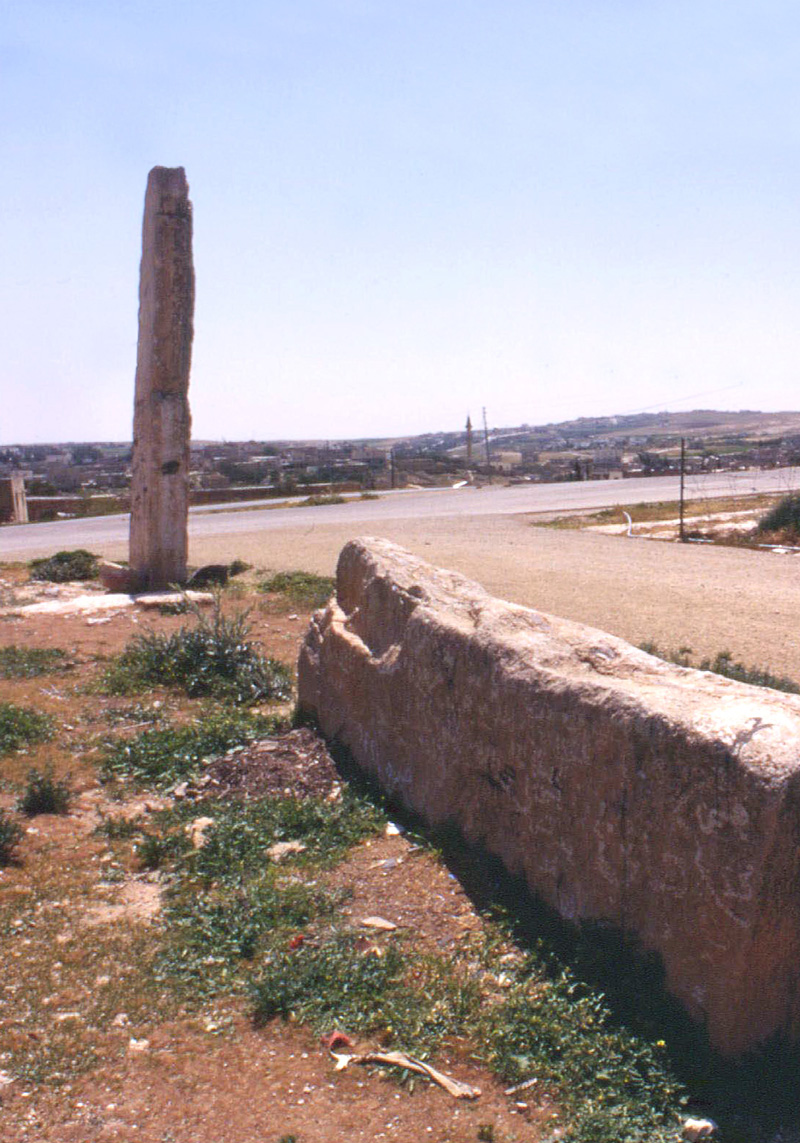Monolith of Mystery
It was 1984. At the bus stop of Karak, bus drivers were calling out the names of the villages hoping to start their journey with seats full. The name "Al Yarout" sounded interesting, so I entered the mini bus of that village. Instantly, as I took my seat I felt like a stranger, for all passengers knew each other and knew that someone from outside their village is on board.
Arriving to Al Yarout at the end of the bus line, I left the bus and started exploring the village. Not to end up riding back in the same bus to Karak I found a vendor, a man with his young son, singing the contents of the canvas-covered back of his pickup truck: slippers, shoes, brooms, dresses, spoons, plastic buckets and scarves. The decision to join this mobile boutique/utensil omni-shop turned out to be an excellent idea. We were going from village to village, all a few minutes apart. We drove through Smakieh, Hmoud, Judaideh and others, and besides learning the prices of plastic shoes and glazed Chinese tin plates, I was observing the architecture of the different villages. Suddenly there was something different in the middle of the village of Adir. I thanked the vendor and jumped out of the pickup.
Out of the natural land surface, there emerged a strange stone, in one-piece, standing like a sharp saber that fell down from the sky. A few meters away another similar stone lay down on its side. The effect was monumental, eternal, and somewhat strange. The standing stone, about five meters above the ground and some unknown extra length below, was so powerful with its natural finish, without any visible workmanship or chisel marks; this stone was simply a hard rock, selected from nature and erected in this spot for reasons little known even to archaeologists.

Such stones, “monolithic pillars” as archaeologists call them, can be found in many locations in Jordan. An impressive line of these pillars can be seen at the site of Dhra’, near the Lisan of the Dead Sea (excavated by Carsten Körber from the German Protestant Institute for Archaeology, 1992). Little is known about their function, but most scholars explain them within a context of ancient cultic rituals. They are Jordan’s oldest man-made monuments, dating at least to the Chalcolithic period (4,000 to 3,000 year BC). Some date them to pre-pottery times –about 8,000 years ago or earlier; for the pottery-free layers at their base adds to the difficulty of giving them an accurate date.
Scarce information on these stone pillars can be obtained from a few texts. They are usually called masseboth or massebah which comes from the Semitic and Arabic verb nasaba -“to erect” or the noun nasb “a monument”. They often mark an open space, next to holy trees, or are in groups covering a bigger area. Like sacred trees, such stones might have served special rituals, they functioned as tomb monuments and in other references they were erected by individuals, for themselves, especially if the individual was childless. They might also had some legal function (as sacred trees in recent Bedouin tradition where individuals are taken for an honest swear).
With all their prehistoric functions: cultic, memorial, legal, commemorative and honorary, these stones remain amazingly powerful to our modern eyes, they are monuments of abstract sculpture giving their surroundings an overwhelming feeling of zenith and awe; the very qualities that impacted individuals thousands of years ago.
You can visit the Nabataean temple at the village of Qasr, the hot spring in the beautiful Wadi Ibn Hammad, and other natural monuments on the way, such as Wadi Mujib and the hot springs of 'Afra at Wadi Al Hisa further to the south. Adir has lost most of its traditional architecture, but driving for another few kilometers to the north, you can find the village of Hmoud, with a charming collection of traditional architecture of the early 1920s. A drive through the back roads of these less-known villages can provide excellent subjects for photography or drawing, you can enjoy the exploration of places hardly mentioned in guidebooks.